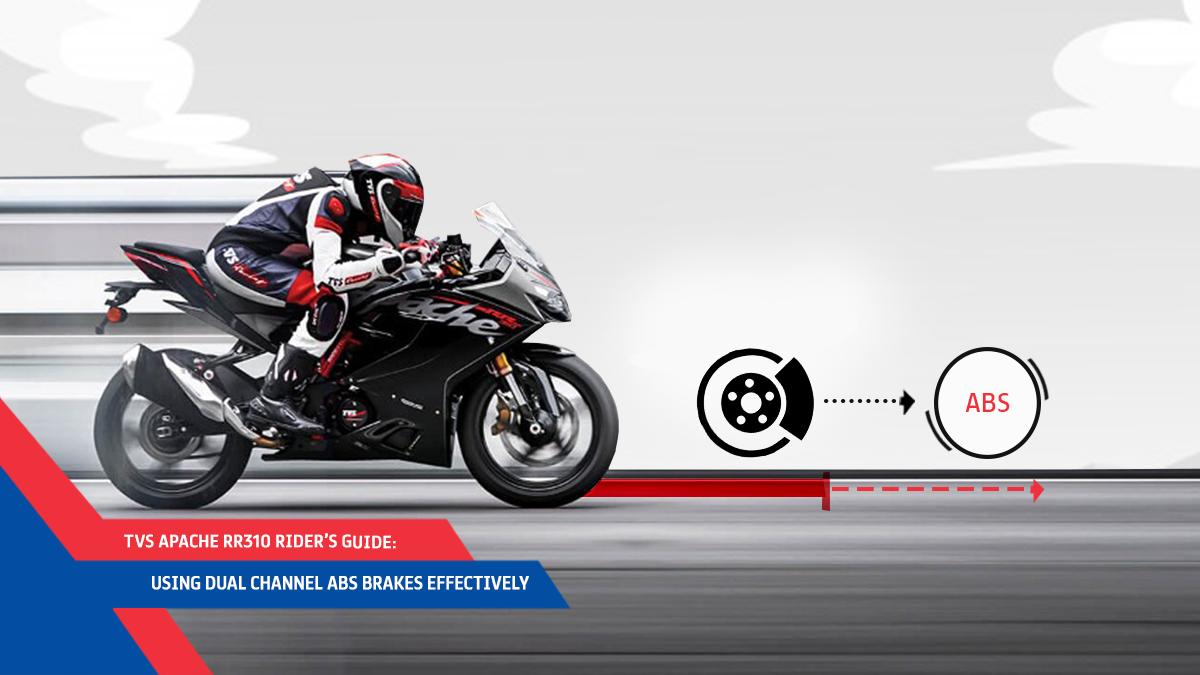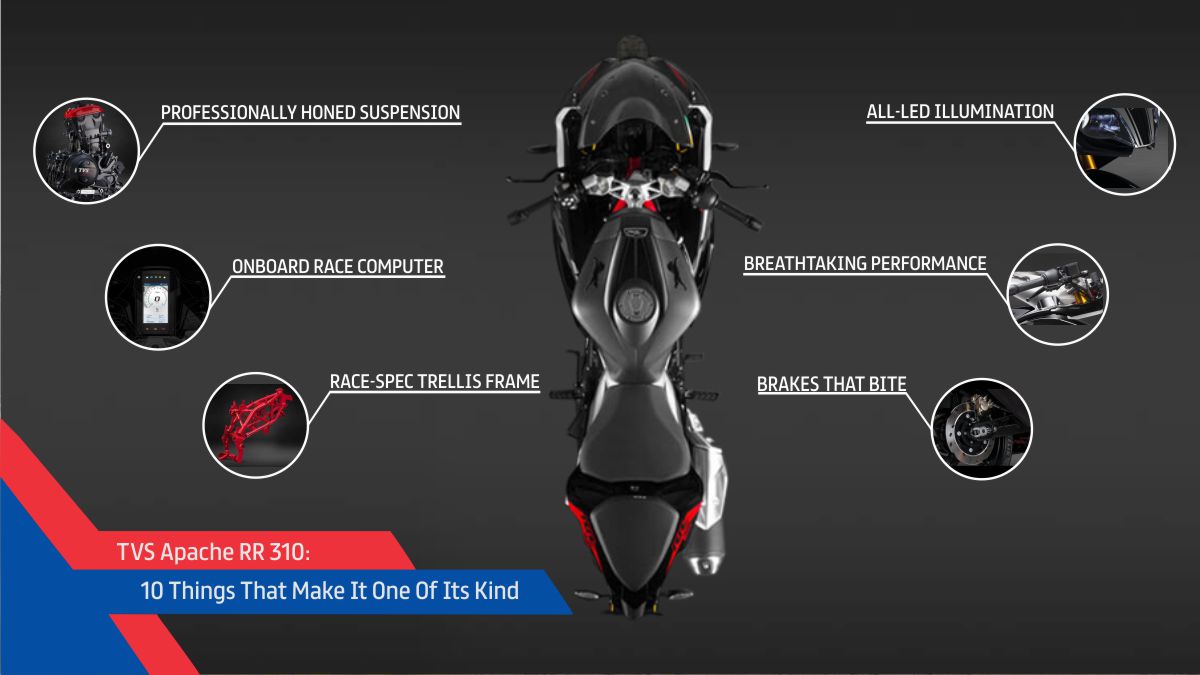Anti-lock braking system i.e. ABS in bikes has become more prevalent in motorcycles in recent years because of its ability to improve rider safety. During hard or sudden braking, wheels can lock up because the braking force exceeds the grip of the tire. This causes the rider to fall as the wheels skid. To improve safety and prevent wheels from locking, manufacturers developed Anti-Lock Braking Systems (ABS) in bikes. This allows the rider to maintain control and stop at a shorter distance. TVS Motor is a pioneer when it comes to bringing ABS technology to motorcycles in India. We are the first Indian motorcycle company to make ABS available in bikes way back in 2011.
What is ABS in Bikes?
Anti-lock braking systems (ABS) prevent the motorcycle's wheels from locking during sudden braking. By preventing wheel lockup, ABS maintains traction and control of steering, allowing bikers to move around obstacles and avoid accidents. This technology functions using sensors on the wheels that monitor wheel speed and modulate braking pressure as required. The ABS sensors monitor the speed of the wheel and pass data to an electronic control unit also known as the ABS module. When braking pressure is applied, the ABS module detects if the wheels are starting to lock up based on the information from the sensor. It then adjusts brake pressure as required to prevent the wheels from locking up and helps maintain control.
Motorcycle ABS systems come in two main types: Single Channel ABS and Dual Channel ABS.
Also Read: Two-Wheeler Braking: The Correct And Most Effective Techniques Explained
Difference Between Single and Dual-Channel ABS
Single Channel ABS works only at the front wheel and brake. On the other hand, Dual Channel ABS operates at both the front and rear wheels. As most motorcycle braking occurs at the front, a single channel is adequate in many cases. That being said, Dual Channel ABS provides more comprehensive protection by covering both wheels. With Dual Channel ABS, one can brake hard using both the front and rear brakes - this gives the rider the shortest stopping distance on regular roads. The dual system has ABS on both wheels so riders can get maximum braking power and control. Also, for street riding, it is recommended to have bikes with Dual Channel ABS for superior braking. Single Channel ABS works well for trail riding since one can still get the rear loose.
As you can see, each has advantages depending on the riding conditions.
Advantages of Dual-Channel ABS in Bikes
Here are some key benefits of bikes with Dual Channel ABS.
Prevent Wheel Lockup
During hard or panic braking, vehicle wheels can lock up and skid. This causes a loss of steering control and longer stopping distances. ABS prevents wheels from locking even when brakes are applied firmly.
Shorter Stopping Distances
By keeping wheels from locking up, motorcycle ABS allows bikers to apply brakes harder without losing traction. This shortens stopping distances in emergency braking situations.
Vehicle Control
Dual Channel ABS in bikes help maintain manoeuvrability and steering control even when braking hard on slippery surfaces. This improves accident avoidance capabilities.
Reduce Skids
ABS in bikes pumps the brakes to prevent wheel lockup. This lets the biker maintain control and steer out of impending skids in hazardous conditions.
Based on TVS Racing lineage, our bikes like the Apache RTR 310, Apache RR 310 and Apache RTR 200 4V feature Dual Channel ABS technology providing enhanced braking performance and stability for racers on the racetrack.
RELATED BLOGS:
TVS Apache RR310 Rider’s Guide: Using Dual Channel ABS Brakes Effectively
TVS Apache RR 310 Gearbox: What Makes It Special, And How To Use It Properly




